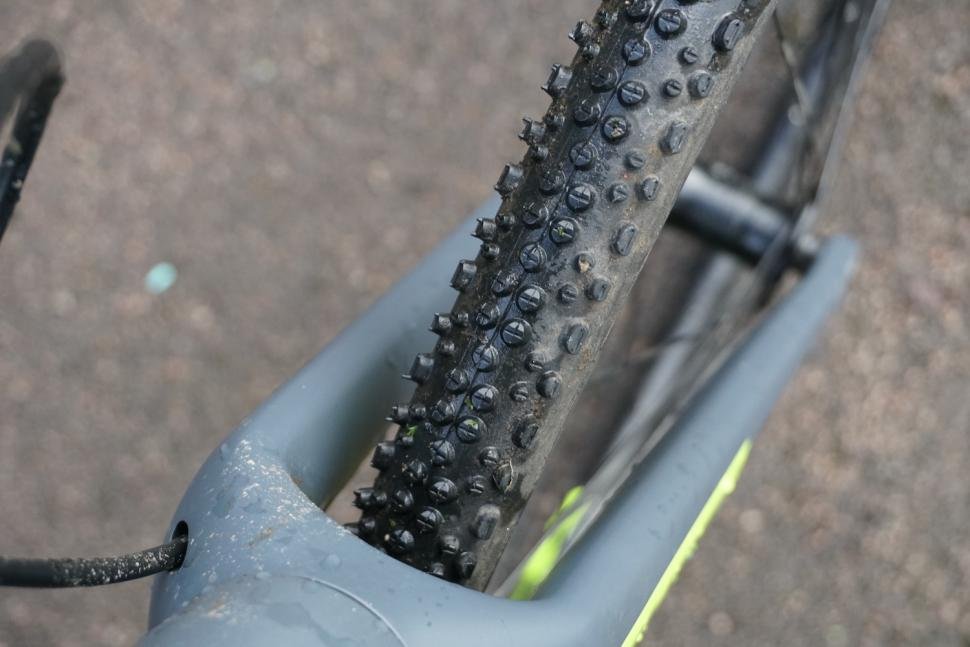Gravel bikes and cyclocross bikes are two exciting types of bikes that strike the balance between off-road adventure and racing. Gravel bikes impress with their versatility, they can easily master a wide variety of terrain and can cover longer distances in comfort.
Cyclocross bikes, on the other hand, are characterized by their distinctive racing DNA, which makes them agile and resilient for demanding cross-country races.
Our comparison of these two bike categories is intended to show you the subtle differences and help you decide between a gravel bike and a cyclocross bike.
GRAVEL BIKE OR CYCLOCROSS? THIS IS HOW YOU DECIDE
A gravel bike contains the perfect mix of racing bike and mountain bike components and is ideal for riders who want to ride on the road, on gravel, and in the forest. It’s not for nothing that “Gravel” means gravel. Gravel bikes are therefore ideal for sporty rides in any weather and on varying surfaces – with a gravel bike it’s racing bike season for you all year round!
Cyclocross bikes are also somewhere between racing bikes and mountain bikes and are intended for riders who want to ride their bike in a sporty way, especially off paved roads. Cross-country over meadows and gravel, across the forest, up and down mud tracks, carrying the bike on your shoulder – a cyclocross bike is a sporting competition device, a mountain bike with racing handlebars.
WHICH COMPONENTS SHOULD YOU CHOOSE FOR THE GRAVEL BIKE AND CYCLOCROSS?
Although both bike categories have their roots in the off-road sector, gravel and cyclocross bikes differ in some components such as the handlebar design, geometry, or tyre choice. It is the fine nuances in the construction that have a decisive influence on their behavior on different terrains. A comparison of the components shows how they affect your driving experience in terms of handling, performance, and versatility.
TYRES

The tyre width of a gravel bike varies from 28 mm (very sporty) to 42 mm (very comfortable). The wider and more profiled a tyre is, the more comfortable but also slower the bike becomes. 28-inch rims are common, but for more off-road mobility and in the direction of touring bikes, some manufacturers also offer the common mountain bike size of 27.5 inches.

For a cyclocross, the tyre width is between 32 mm and 35 mm, although the tyres are usually heavily profiled to ensure a good grip on the terrain. According to the UCI, a maximum of 33 mm wide tyres are permitted in cross-country races. 28-inch rims are standard.
GEOMETRY
Gravel bikes have a more moderate seating position than racing bikes. A shorter top tube combined with a longer head tube ensures a more upright and compact seating position and therefore ideal long-distance and travel properties. A stack-to-reach value of around 1.5 (describes the golden mean) to 1.65 (very comfortable) represents a relaxed sitting position.
Cyclocross bikes are designed for a compact but sporty seating position. This is reflected in a shorter top and head tube, which results in more saddle elevation and a sportier stance than on a gravel bike. In addition, the bottom bracket is positioned higher for more ground clearance, which results in a higher center of gravity for the bike. A slack steering angle ensures better control on descents and changing terrain. A stack-to-reach value of 1.5 (describes the golden mean) to 1.35 (very sporty) indicates a more sporty geometry. Another characteristic feature of a cyclocross frame is the flattened top tube so that the bike can be comfortably shouldered when carrying parts. The externally routed Bowden cables on these frames therefore run along the top tube.
FURNISHING
Due to the wide range of uses on gravel bikes, you often have the option of installing mudguards and luggage racks. This makes them ideal for riding in any weather and as a touring bike. Some manufacturers even go so far as to equip their gravel bikes with permanently mounted lighting and hub dynamos so that they comply with the StVZO – a not-unimportant point for year-round riders.
Due to their sporty design, cyclocrossers are geared towards low weight and maximum performance, which is why mudguards and, even more rarely, luggage racks are provided ex-works.
TRANSLATION
With gravel bikes you will find the entire range of gear ratios, from the classic racing bike gear ratio of 2×11-speed with a compact 50/34 crank, to cross gear ratios of 2×11-speed with 46/36, and smaller, to the still new 1-speed gears like Apex, Rival or Force 1×11 from Sram.
Since cyclocross bikes are less designed for high speeds, you will find smaller gear ratios with finely graduated gears depending on the area of use. With two chainrings at the front, the gradations 46/36, 44/34, and 42/32 are common; at the rear, 11-28 or 11-32 cassettes are usually used. The trend towards single cranks from the MTB sector has now also arrived in cyclocross: less weight, less susceptibility to maintenance and breakdowns, and at the same time easier operation are good arguments that bring great advantages, especially in cross-country sports.
BRAKES
Gravel bikes usually come with disc brakes, which have better braking performance than classic rim brakes in bad weather or high loads. Cheaper models have mechanically operated disc brakes, and higher-quality bikes have hydraulic disc brakes.
The brake disc has also established itself as a standard in the cyclocross segment, whether mechanically or hydraulically operated. You will only find the well-known cantilever brake on very affordable or nostalgic models. Although it is lighter and requires less maintenance than the disc brake, it is significantly inferior to it in terms of braking performance in dirty conditions – and that is ultimately what matters when it comes to cyclocrossers.
CYCLOCROSS OR GRAVEL BIKE? – COMPARISON OF BOTH BIKES
As a racing cyclist, you feel it firsthand every day: the classic racing bike has a relatively narrow range of uses. Unfortunately, good performance on the road comes at the cost of other disadvantages, such as the lack of suitability for poor roads and use in all weather conditions as well as the ability to accommodate luggage.
So if you want to cycle sporty all year round, no longer want to share the roads with cars or are even planning an ambitious cycling trip, a racing bike with a wider range of uses is the right solution. Both cyclocross bikes and gravel bikes can largely compensate for the disadvantages of the classic racing bike, although you decide which bike is right for you based on your main purpose.
We have characterized two different types of riders here, just look at which type suits you best and you will have a good recommendation for choosing the right bike.



